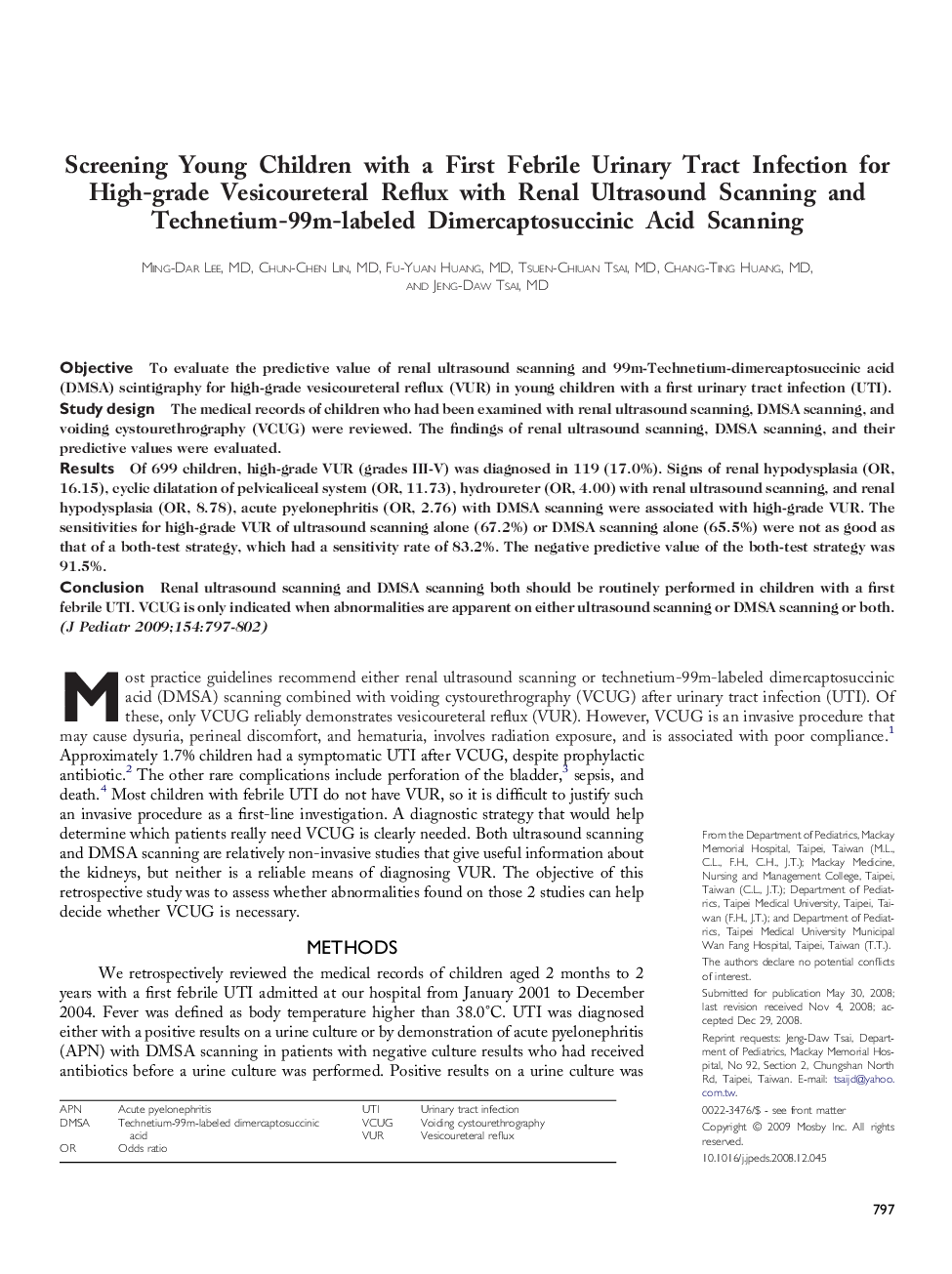| Article ID | Journal | Published Year | Pages | File Type |
|---|---|---|---|---|
| 4166907 | The Journal of Pediatrics | 2009 | 6 Pages |
ObjectiveTo evaluate the predictive value of renal ultrasound scanning and 99m-Technetium-dimercaptosuccinic acid (DMSA) scintigraphy for high-grade vesicoureteral reflux (VUR) in young children with a first urinary tract infection (UTI).Study designThe medical records of children who had been examined with renal ultrasound scanning, DMSA scanning, and voiding cystourethrography (VCUG) were reviewed. The findings of renal ultrasound scanning, DMSA scanning, and their predictive values were evaluated.ResultsOf 699 children, high-grade VUR (grades III-V) was diagnosed in 119 (17.0%). Signs of renal hypodysplasia (OR, 16.15), cyclic dilatation of pelvicaliceal system (OR, 11.73), hydroureter (OR, 4.00) with renal ultrasound scanning, and renal hypodysplasia (OR, 8.78), acute pyelonephritis (OR, 2.76) with DMSA scanning were associated with high-grade VUR. The sensitivities for high-grade VUR of ultrasound scanning alone (67.2%) or DMSA scanning alone (65.5%) were not as good as that of a both-test strategy, which had a sensitivity rate of 83.2%. The negative predictive value of the both-test strategy was 91.5%.ConclusionRenal ultrasound scanning and DMSA scanning both should be routinely performed in children with a first febrile UTI. VCUG is only indicated when abnormalities are apparent on either ultrasound scanning or DMSA scanning or both.
